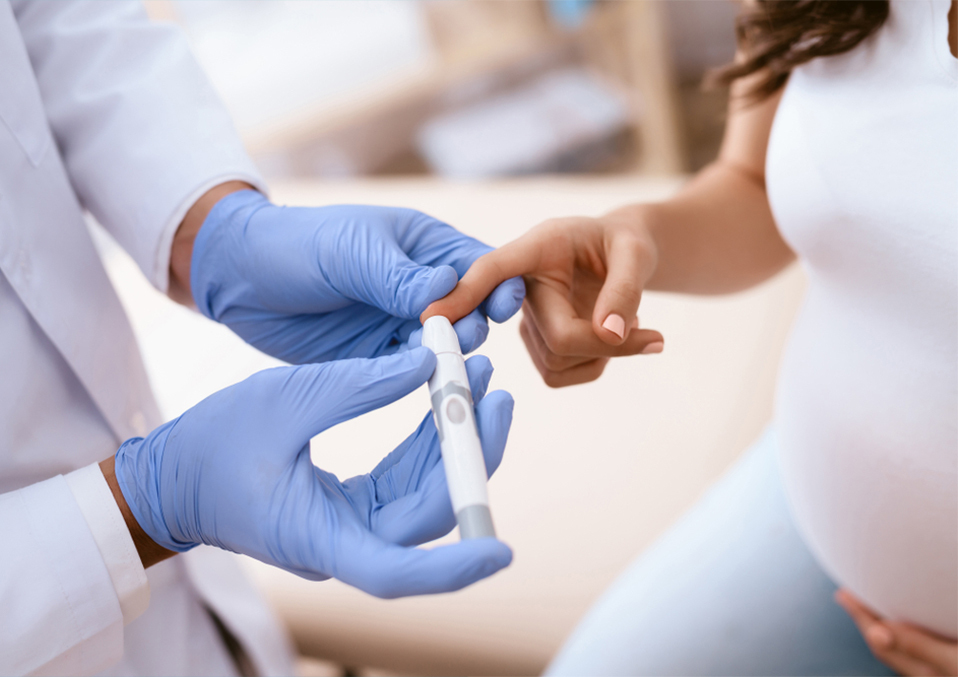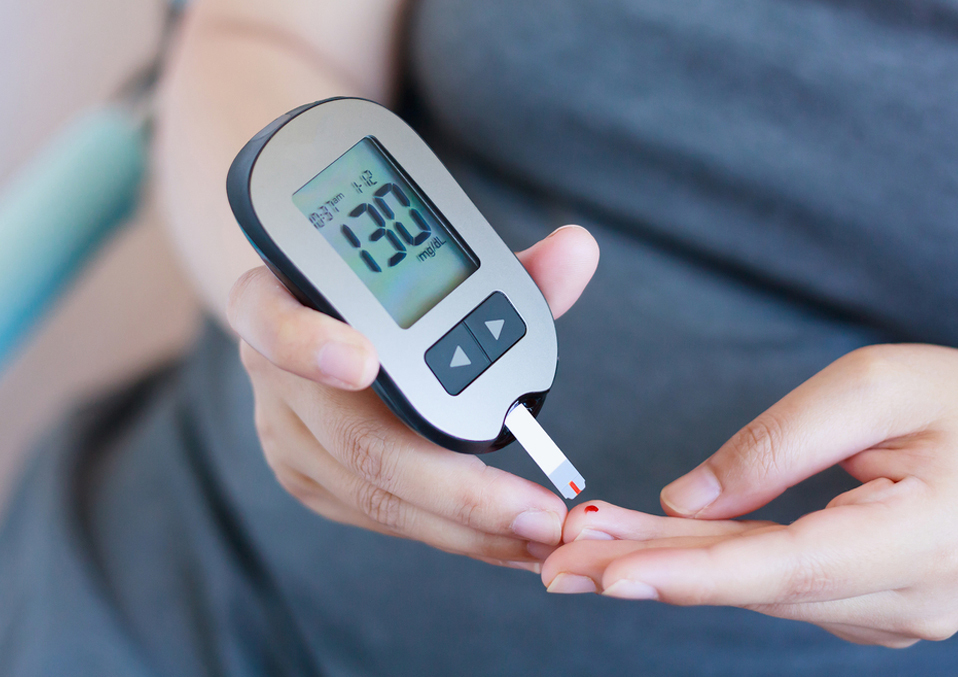Glucose tests during pregnancy test to check the level of glucose (sugar)in the blood of pregnant women.
Gestational diabetes is high glucose (diabetes) that begins or is perceived during pregnancy.
The glucose screening, for the most part, occurs close to the part of the bargain trimester, somewhere in the range of 24 and 28 weeks of pregnancy. It may be done in two or three stages: The standard two-advance version of the test starts with a one-hour test that is recommended for each pregnant people.
By then, if your results on the one-hour test show that you have a great deal of glucose in your blood, you may then be required to complete a three-hour test. In the single-step variation of the test, the whole thing is done in two hours.
How The Test Is Performed

Two-Step Testing
At The First Stage, a Glucose Test Is Done:
- There is no need to cook or change your diet in any way.
- You will be asked to take fluids containing glucose.
- Check the glucose solution 1 hour after taking the blood glucose level.
- If your blood glucose level in the first stage is too high, you should return to the glucose tolerance test in 3 hours. For this test:
- Do not eat or drink anything for 8-14 hours before the test.
- You will be asked to take 100 grams (g) of liquid that contains glucose.
- The blood is drawn before drinking the liquid, and after drinking it is drawn again every 3 minutes every 60 minutes. Unfailingly, your glucose level will be checked.
- This test will take at least 3 hours.
One-Step Testing
You should go to the lab once for a 2-hour glucose tolerance test. For this test:
- Do not eat or drink anything for 8-14 hours before the test. (it’s prohibited to eat during the test.)
- You will be asked to take a liquid containing glucose (75 g).
- The blood is drawn before drinking the fluid, and subsequent to drinking it is rehashed and again at regular intervals. Without fail, your glucose level will be checked.
- This test will take at least 2 hours.
How To Prepare For The Test

For a two-advance test or one-advance test, you can eat standard dishes the day going before the glucose test. If you do not provide medical care, the drug can be tested for test results.
How The Test Will Feel
Most ladies don’t have symptoms from glucose resistance testing. Drink glucose solution is very sweet soda. Some women feel nausea, sweating and pain after taking glucose solution. Most ladies don’t have symptoms from glucose resistance testing.
Why The Test Is Performed
This test confirms gestational diabetes. Most pregnant women undergo a glucose screening test within 24 and 28 weeks of pregnancy. The test should be done earlier if there is a high level of glucose in the urine during normal prenatal visits or if there is a higher risk of developing diabetes.
Women at low risk of developing diabetes cannot be examined. Low risk, all these requirements must take place:
- I have never been tested to show that my blood sugar is above normal
- His ethnic group has a low risk of developing diabetes.
- You don’t have first degree relatives (guardians, kin or kids) with diabetes.
- He is under 25 years of age and has an ordinary weight.
- She had no bad consequences during her previous pregnancy.
Read Also:
A Normal Result.
Test In Two Stages:
In most cases, the usual result of glucose screening tests is glycemia 140 mg / DL(7.8 mmol / l) no more than 1 hour after drinking a glass of glucose solution. A conventional outcome suggests that you don’t have gestational diabetes.
Note: mg/DL suggests milligram per decorator and mmol/l infers millimole per liter. These are two unique approaches to show how much glucose is in the blood.
On the off chance that the blood glucose level is over 140 mg/DL (7.8 mmol/l), the following stage is to test for oral glucose resilience. On the off chance that you have gestational diabetes, you will see this test. Most women who pass this test (out of approximately 2-3) do not have gestational diabetes.
One-Step Testing
If your glucose level is lower than the irregular results portrayed underneath, you won’t have gestational diabetes.
What Does An Unusual Result Mean?

Test In Two Stages
Abnormal blood values for oral glucose tolerance test 100 grams 3 hours:
- Fasting: more than 95 mg / DL(5.3 mmol/l)
- 1 time: more than 180 mg / DL(10.0 mmol / l)
- 2 hours: over 155 mg / DL (8.6 mmol / l)
- 3 hours: over 140 mg / DL (7.8 mmol / l)
One-Step Testing
75 g of abnormal blood counts for oral glucose tolerance test for 2 hours:
- Fasting: over 92 mg /DL (5.1 mmol / l)
- 1 time: more than 180 mg / DL(10.0 mmol / l)
- 2 hours: more than 153 mg / DL (8.5 mmol/litmus))
If the only thing in blood glucose testing leads to oral glucose tolerance being higher than normal, your supplier will change some of the foods you eat and your supplier will be able to overestimate after changing your diet.
In the event that a portion of your blood glucose results are higher than ordinary, you have gestational diabetes.
Risk Factors Include
There is a small risk of taking blood. Veins and conduits shift in size from individual to individual and from one side of the body to the next. Taking a blood test from certain individuals might be more troublesome than others.
Other related risks include minor ones that are depicted by blood:
- Excessive bleeding
- Fainting or dizziness.
- Multiple punctures to locate veins
- Hematoma(accumulation of blood under the skin)
- Infection (a slight risk whenever the skin is broken)
Read Also:
- Pregnant Women Snoring, All You Need To Know.
- The Causes Of Weight Gain During Pregnancy.
- 8 Power Foods To Get You Pregnant.


